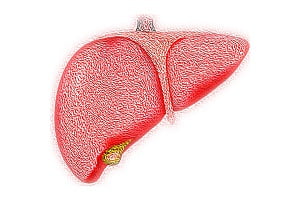
Hepatitis is a common disease that causes inflammation of the liver, an important organ for metabolism and breaking down food in the digestive system. Till now 5 different types of viral hepatitis are known, which include A, B, C, D and E. Hepatitis is an inflammation of the liver and can be either acute or chronic. Currently, hepatitis is largely preventable.
The five different hepatitis viruses (A, B, C, D, and E) belong to five different virus families and are genetically distinct with different replication strategies. They also present different clinical features and outcomes. Viral hepatitis is a liver disease caused by exposure to one of the five different hepatitis viruses. Although other viruses can also cause hepatitis but only these five are considered hepatitis viruses.
What are The Different Types of Hepatitis?
Ideally, there are 5 different types of hepatitis which include A, B, C, D and E, and all these types are typically caused by different viruses. The other causes of hepatitis are drugs, including certain medications and health supplements, alcohol and metabolic liver diseases such as iron overload and fatty liver, which causes an accumulation of fat in obese and diabetic people. All these factors can result in drug-induced hepatotoxicity, alcoholic liver disease, hemochromatosis and nonalcoholic fatty liver disease.
Hepatitis is in fact a depiction that the liver is injured. The injury then can lead to various serious complications. Viral hepatitis has been found as the leading cause of liver cancer and liver transplants.
Some forms of hepatitis can be acute which means that the illness is temporary, and recovers on its own in most patients. Other forms can be chronic, which means that the disease persists for longer time and over time progresses to cirrhosis (severe liver damage), liver failure and liver cancer. Approximately, 15,000 Americans die every year from liver cancer or chronic liver disease caused by viral hepatitis.
Different types of hepatitis are described below:
Hepatitis A (HAV)
Hepatitis A is a liver disease caused by the hepatitis A virus, and primarily spreads by ingesting food contaminated with the faeces of an infected person. The disease is closely associated with infected water, poor sanitation and poor personal hygiene. People are usually exposed to hepatitis A virus by eating or drinking something that is contaminated with the virus.
In most of the developing countries, there are poor sanitation systems due to which infected stools can contaminate the entire water supply. There are great chances of hepatitis A infections in such countries. In such cases, good hygiene and avoiding contaminated food and water can be a great defense, but the best protection is to get the hepatitis A vaccine.
In 2016, almost 2,007 new HAV cases were reported to the CDC. The hepatitis A is a form of acute illness (acute viral hepatitis) that never becomes chronic. At one point of time, the hepatitis A was called “infectious hepatitis” because it can be spread easily from person to person like other viral infections. Hepatitis A is usually spread among family members and close relations through the passage of oral secretions (intimate kissing) or stool (poor hand washing). HAV infection can easily spread to customers in restaurants and among children and workers in day care centers if hand washing and sanitary precautions are not observed. Some of the symptoms of HAV infection include:
- Fever
- Fatigue
- Appetite loss
- Vomiting
- Abdominal pain
- Dark urine
- Diarrhea
- Clay-colored or light stools
- Joint pain
- Jaundice
Proper hand washing and vaccination can help in preventing in hepatitis A.
Hepatitis B (HBV)
Hepatitis B is a potentially dangerous liver infection caused by the hepatitis B virus. It is one of the major global health problems. It can cause chronic infections that can progress to life-threatening conditions like liver cirrhosis and liver cancer.
The HBV is primarily transmitted through blood or blood-derived products. HBV is the one of the most common of the three viruses known to cause chronic hepatitis, HCV and HDV being the other two. HBV virus consists of a double shell. The outer shell is the viral envelope consisting of HBsAg while the inner shell consists of hepatitis B core antigen (HBcAg) which encloses the viral genome. HBV is abundant in the blood during infections and also in some chronic infection with titres of up to 1010/ml.
In 2016, almost 3,218 new cases of HBV infection were reported by the CDC and there occurred death of more than 1,698 people in the United States due to the consequences of chronic hepatitis B. Earlier HBV hepatitis was referred to as “serum hepatitis,” because it is thought that the only way HBV could spread is through blood or serum containing the virus. Now, it is known that HBV can spread by sexual contact, the transfer of blood or serum through shared needles in drug abusers, accidental needle sticks with needles contaminated with infected blood, hemodialysis, blood transfusions, and by infected mothers to their newborns. The infection can also spread by tattooing, body piercing, and sharing razors and toothbrushes contaminated with infected blood.
Almost 5% to 10% of patients with HBV hepatitis can develop chronic HBV infection and can infect others as long as they remain infected. Patients with chronic HBV infection are at a great risk of developing cirrhosis, liver failure, and liver cancer. It is estimated that approximately 2.2 million people in the United States and 2 billion people world-wide suffer from chronic HBV infections.
The HBV can survive outside the body for at least seven days and can still cause infection. Commonly, HBV spreads through blood, urine, semen, and from infected mother to her infant soon or right after birth. Some of the symptoms of acute hepatitis B can include:
- Fever
- Fatigue
- Loss of appetite
- Abdominal pain
- Jaundice
- Joint pain
- Nausea
- Vomiting
- Dark urine
- Clay-colored stools
Hepatitis C (HCV)
Hepatitis C is a liver disease caused by the hepatitis C virus, which can cause both acute and chronic hepatitis infections, ranging from mild to severe infections. The mild illnesses can last a few weeks while the severe ones can be lifelong. The hepatitis C virus is a blood borne virus and most commonly spreads through unsafe injection practices, inadequate sterilization of medical equipment in some health-care centers and unscreened blood and blood products.
Typically HCV infections are chronic. HCV belongs to hepacivirus genus of flaviviridae which also includes yellow fever, dengue, West Nile and Japanese encephalitis viruses. All these viruses possess similarities in their genomic structures and replication strategies. Both HBV and HCV increase a person’s risk for liver cancer.
In 2016, a total of 2,967 cases of hepatitis C were reported by the CDC. The CDC also reported that the actual number of acute cases of HCV are estimated to be 13.9 times the number of reported cases in any year. Therefore, it is estimated that there were actually 41,200 acute hepatitis C cases in 2016.
Previously, HCV hepatitis was known as “non-A, non-B hepatitis,” because the causative virus was not identified, and it was known to be neither HAV nor HBV. HCV usually is spread by sharing needles among drug abusers, blood transfusions, hemodialysis, and needle sticks. Approximately, 75-90% of transfusion-associated hepatitis cases are caused by HCV. HCV virus transmission by sexual contact has also been reported, but it is very rare. Almost 75% to 85% of patients with acute HCV infection develop chronic infection and the patients with chronic HCV infection can continuously infect others. Patients with chronic HCV infection are at a higher risk of developing cirrhosis, liver failure, and liver cancer. In the United States, approximately 3.5 million people get chronic HCV infections.
HCV can survive outside of the body for up to four days. The symptoms for acute hepatitis C can include:
- Fever
- Fatigue
- Dark urine
- Clay-colored stools
- Abdominal pain
- Loss of appetite
- Nausea
- Vomiting
- Joint pain
- Jaundice
More than 90 percent of people with chronic hepatitis C infections can be cured within eight to 12 weeks of treatment with oral medications.
Hepatitis D (HDV)
Hepatitis D usually occurs in people who are already infected with the hepatitis B virus. HBV is passed on through contact with infected blood. People who do not have hepatitis B can prevent hepatitis D infection by getting vaccinated against hepatitis B virus.
People infected with hepatitis B virus often develop hepatitis D, which is spread through contaminated blood products and unprotected sex with an infected person. Hepatitis D is also called as ‘delta hepatitis,’ and is very uncommon in the United States.
HDV does not encode its own envelope protein and therefore depends on Hepatitis B virus for its transmission. It has an outer coating of HBsAg beneath which is HDVAg protein and RNA. Based on the genomic sequence, Hepatitis D Virus has been classified into three genotypes. Hepatitis D causes inflammation of the liver. HDV infection can be prevented by getting vaccinated against HBV and also by avoiding blood and body fluid contact with HBV infected person.
People with chronic hepatitis due to HBV and HDV develop cirrhosis (severe liver scarring) rapidly. Moreover, the combination of HDV and HBV virus infection is very difficult to treat.
Hepatitis E (HEV)
HEV is a liver disease caused by the hepatitis E virus, which is a non-enveloped, positive-sense, single-stranded ribonucleic acid (RNA) virus. The HEV is mainly transmitted through contaminated drinking water. Although HEV is a self-resolving infection and resolves within 4–6 weeks, occasionally, a fulminant form causes acute liver failure and can lead to death.
Mostly, HEV is found in underdeveloped areas of the world and is spread by the fecal and oral route. Hepatitis E infection can be more dangerous in pregnant women who are at an increased risk of liver failure and death. Hepatitis E does not cause chronic infection. Hepatitis E virus (HEV) bears a similarity with HAV in terms of disease, and mainly occurs in Asia where it is transmitted by contaminated water.
HEV is one of the major causes of acute hepatitis in developing countries. A unique characteristic of HEV infection is high mortality rates in pregnant women especially in the third trimester of pregnancy. This type of hepatitis is not found in the United States. It may cause swelling of the liver, but no long-term damage occurs generally. Sometimes, it can also be spread through oral-anal contact.
Hepatitis G (HGV)
HGV virus (HGV) also called as GBV-C has been recently discovered and resembles HCV, but more closely to the flaviviruses. HGV and its effects are still under investigation, and its role in causing disease in humans is not clear yet.






